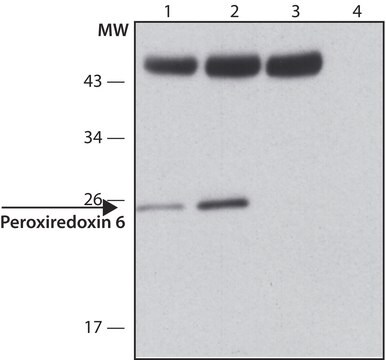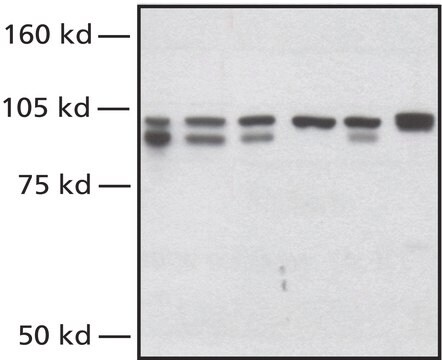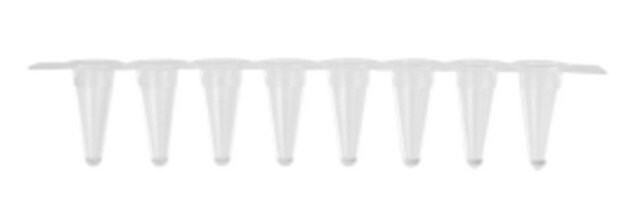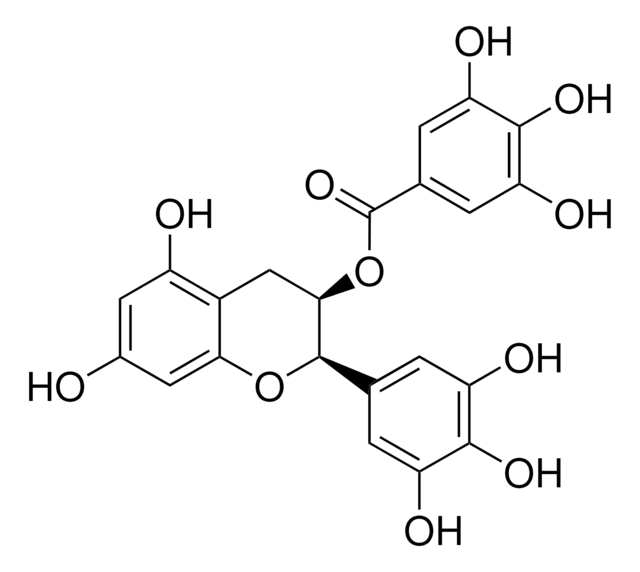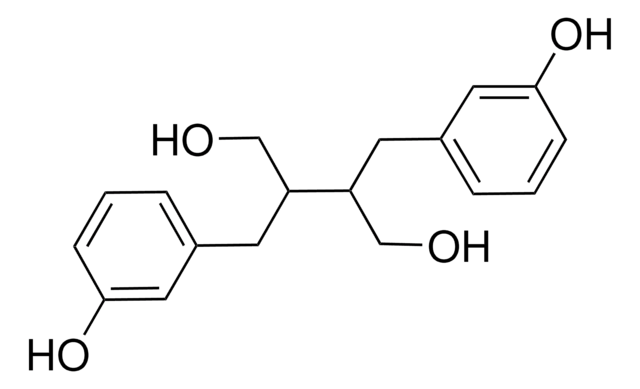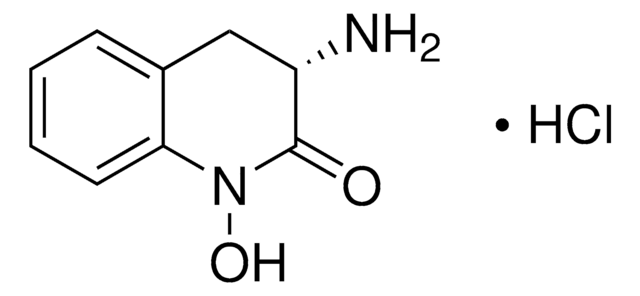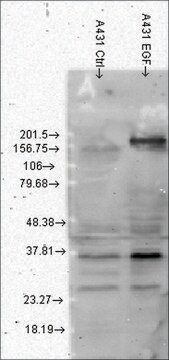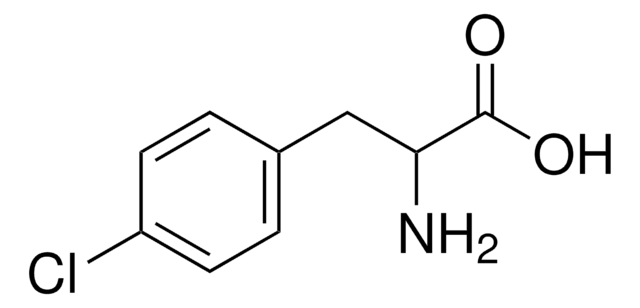H3791
Anti-HOXA3 antibody produced in rabbit
~1.0 mL/mL, affinity isolated antibody
Sinónimos:
Anti-HOX1, Anti-HOX1E, Anti-Homeobox A3, Anti-MGC10155
About This Item
Productos recomendados
biological source
rabbit
Quality Level
conjugate
unconjugated
antibody form
affinity isolated antibody
antibody product type
primary antibodies
clone
polyclonal
form
buffered aqueous solution
mol wt
antigen ~60 kDa
species reactivity
human, mouse
packaging
antibody small pack of 25 μL
concentration
~1.0 mL/mL
technique(s)
immunoprecipitation (IP): 5-10 μg using lysates of HEK-293T cells expressing human HOXA3
indirect immunofluorescence: 2-5 μg/mL using paraformaldehyde fixed HEK-293T cells over expressing human HOXA3
western blot: 2-4 μg/mL using lysates of HEK-293T cells over expressing human HOXA3
UniProt accession no.
shipped in
dry ice
storage temp.
−20°C
target post-translational modification
unmodified
Gene Information
human ... HOXA3(3200)
mouse ... Hoxa3(15400)
¿Está buscando productos similares? Visita Guía de comparación de productos
General description
Specificity
Application
- proximity ligation assay
- immunoblotting
- immunoprecipitation
- immunofluorescence
Biochem/physiol Actions
Physical form
Storage and Stability
Disclaimer
¿No encuentra el producto adecuado?
Pruebe nuestro Herramienta de selección de productos.
Storage Class
12 - Non Combustible Liquids
wgk_germany
nwg
Elija entre una de las versiones más recientes:
Certificados de análisis (COA)
¿No ve la versión correcta?
Si necesita una versión concreta, puede buscar un certificado específico por el número de lote.
¿Ya tiene este producto?
Encuentre la documentación para los productos que ha comprado recientemente en la Biblioteca de documentos.
Nuestro equipo de científicos tiene experiencia en todas las áreas de investigación: Ciencias de la vida, Ciencia de los materiales, Síntesis química, Cromatografía, Analítica y muchas otras.
Póngase en contacto con el Servicio técnico